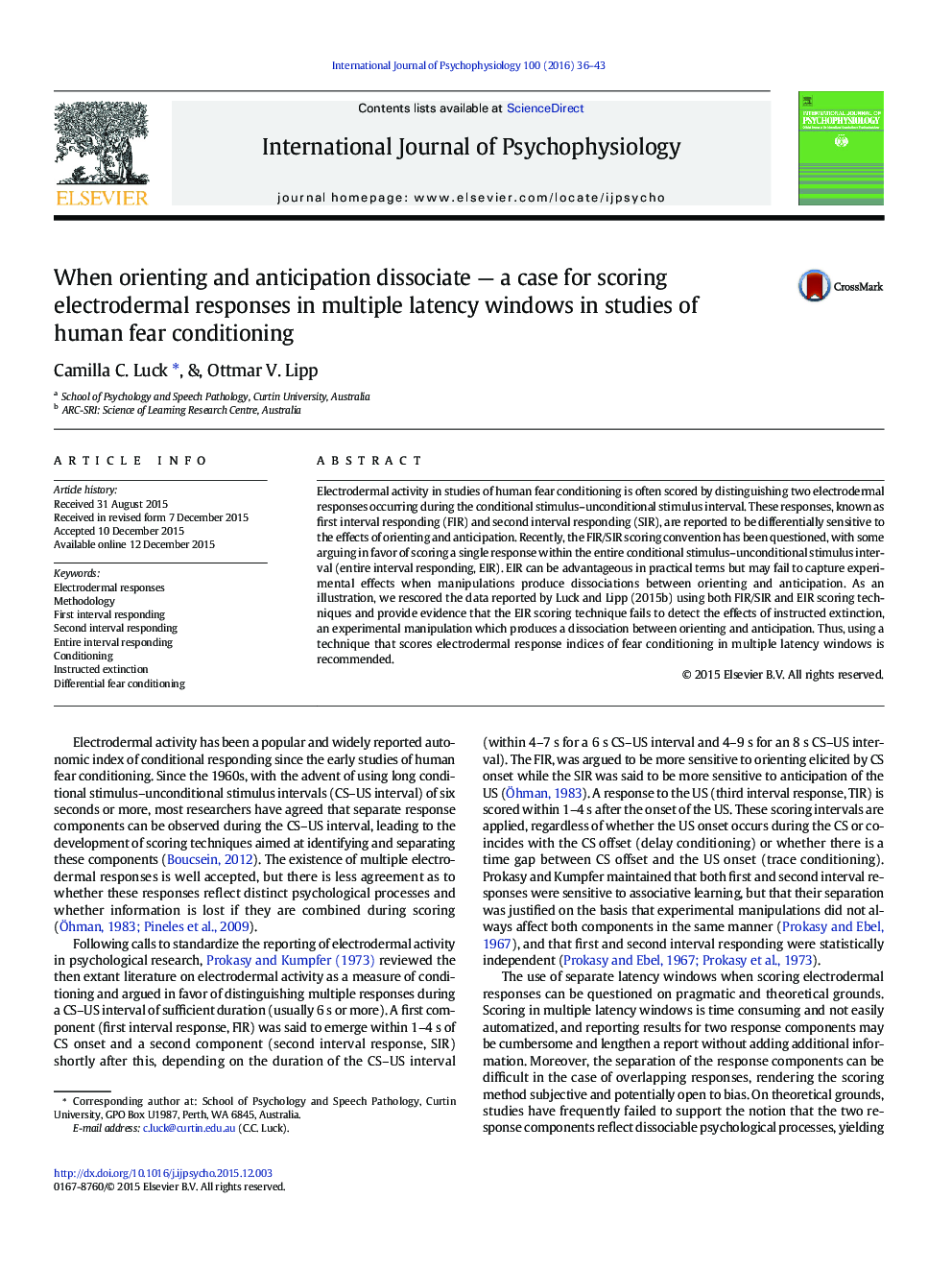| Article ID | Journal | Published Year | Pages | File Type |
|---|---|---|---|---|
| 929789 | International Journal of Psychophysiology | 2016 | 8 Pages |
•Electrodermal responding is often scored in multiple latency windows.•Some argue that scoring an entire interval response (EIR) is more appropriate.•EIR may not capture experimental dissociations between orienting and anticipation.•Instructed extinction (IE) is a manipulation known to produce such dissociations.•We show that an entire interval scoring response does not detect IE effects.
Electrodermal activity in studies of human fear conditioning is often scored by distinguishing two electrodermal responses occurring during the conditional stimulus–unconditional stimulus interval. These responses, known as first interval responding (FIR) and second interval responding (SIR), are reported to be differentially sensitive to the effects of orienting and anticipation. Recently, the FIR/SIR scoring convention has been questioned, with some arguing in favor of scoring a single response within the entire conditional stimulus–unconditional stimulus interval (entire interval responding, EIR). EIR can be advantageous in practical terms but may fail to capture experimental effects when manipulations produce dissociations between orienting and anticipation. As an illustration, we rescored the data reported by Luck and Lipp (2015b) using both FIR/SIR and EIR scoring techniques and provide evidence that the EIR scoring technique fails to detect the effects of instructed extinction, an experimental manipulation which produces a dissociation between orienting and anticipation. Thus, using a technique that scores electrodermal response indices of fear conditioning in multiple latency windows is recommended.
